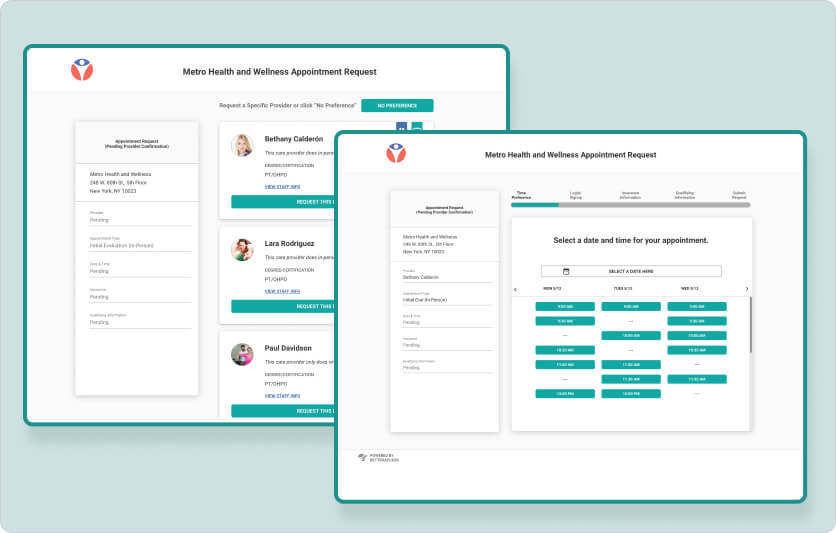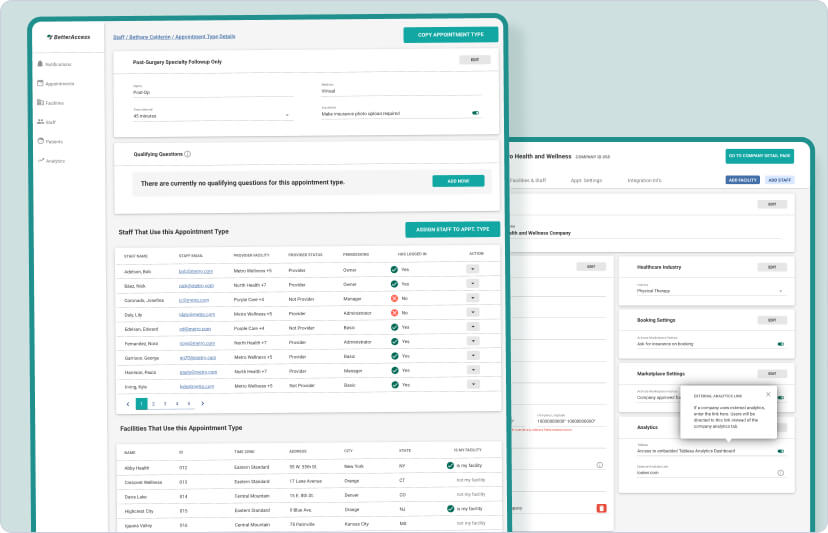BetterHealthcare, formerly known as BetterPT, is a leading HIPAA-compliant telehealth platform designed to streamline patient access and operational efficiency for healthcare providers. By enabling secure virtual appointments, provider-patient interactions, and multi-clinic management, the platform plays a critical role in modernizing digital healthcare services.
34% increase in appointment scheduling
$1M secured in seed funding

New York, USA
December 2021–May 2023
Healthcare
Services Used
“Code District successfully delivered platform features, resulting in a 10% increase in patient and healthcare provider usage. The team always met deadlines and was willing to go above and beyond to satisfy the client’s needs. They were eager to learn new technologies and exceed expectations.”

CTO, Better Healthcare
As BetterHealthcare expanded its services, it encountered critical technical and operational hurdles that threatened platform stability, user experience, and scalability. These challenges needed to be addressed to maintain seamless patient-provider interactions, ensure compliance, and enhance system performance.
BetterHealthcare’s Next.js codebase was highly complex, and with the transition of its front-end development team, there was an imminent risk of losing technical continuity. The lack of comprehensive documentation and knowledge transfer mechanisms made it difficult for the new team to quickly adapt and maintain platform stability without delays or operational disruptions.
The platform’s user interface and experience (UI/UX) had become outdated, leading to usability and accessibility issues that impacted both patients and healthcare providers. The existing Material UI components required modernization, along with elements to create a more intuitive, engaging, and provider-friendly interface.
With a growing user base, BetterHealthcare’s platform struggled with performance inefficiencies, particularly in critical workflows such as:
As the platform expanded, BetterHealthcare needed a scalable, secure approach to deploying new features without disrupting ongoing patient-provider interactions. The lack of a controlled rollout mechanism meant that new features could introduce unforeseen issues, impacting platform stability.
To ensure the platform remained secure, scalable, and user-friendly, a comprehensive front-end modernization strategy was implemented.
Get the full case studyA thorough review of the Next.js architecture was conducted to identify performance bottlenecks and refactor inefficient code. Best practices for debugging, issue resolution, and scalability were introduced, along with a structured knowledge transfer plan to onboard new developers efficiently.
To enhance the overall user experience, the Next.js front end was redesigned with modern UI components. Ant Design elements were integrated while maintaining compatibility with Material UI, improving navigation, accessibility, and responsiveness.
To improve data collection and engagement, we introduced a personalized questionnaire system that allowed providers to gather essential patient information before consultations. The appointment booking flow was redesigned to simplify provider selection and scheduling, making it more intuitive and efficient. Additionally, multi-clinic network integration enabled providers to manage appointments across multiple healthcare organizations, reducing administrative overhead and improving accessibility for both patients and healthcare professionals.
With the growing demand for virtual care, improvements were made to ensure a seamless and secure telehealth experience. The video call infrastructure was optimized to enhance connection stability and reduce latency, ensuring smooth virtual consultations. Security measures were strengthened with advanced encryption, secure authentication, and role-based access controls, maintaining full HIPAA compliance. To enable controlled feature rollouts without disrupting users, we implemented feature flagging via LaunchDarkly, allowing for incremental updates, real-time testing, and seamless rollbacks when needed.
increase in appointment scheduling
secured in seed funding
patients onboarded in one month
increase in patient-provider engagement

